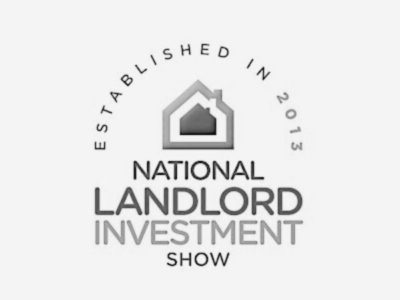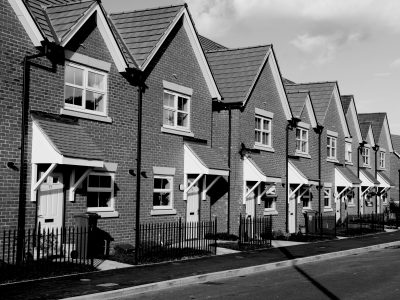London house price growth trails the rest of the country
Ever since the Brexit result in 2016, house price growth in London has trailed the rest of the country.
In fact, when inflation is considered, house prices in London have seen a 5% decrease in real terms.
Knight Frank has predicted that house prices in Greater London will rise by 4% in 2021, with increases totalling 18% by 2025.
The subdued market can be attributed to the Brexit vote, which has lessened demand for property in the capital, especially when businesses are looking to move their headquarters out of London, and the pandemic which urged people to reconsider their living conditions and prioritise space and value for money over the convenience of living in the city.
Property in the rest of the UK is expected to experience more accelerated growth.
Savills have predicted that property in areas furthest away from London will experience more growth due to affordability.
They are predicting a 21.1% rise in property prices in the rest of the UK over five years, vs 12.6% for London.
Cities that have seen high annual growth for a sustained period

Metrolink, Manchester
So far, six cities have seen annual growth of more than 6%, including Leicester (7.7%), Edinburgh (7.4%), Manchester (6.3%), Birmingham (6.2%), Nottingham (6.1%) and Liverpool (6%).
Properties in these cities have also experienced the fastest price growth since the EU referendum, and Sheffield also joints the list in 4th place.
In ten years in Sheffield prices have risen by more than £33,000 on average.
How HS2 can further stimulate growth in northern cities
The construction of HS2 will also mean that the country will grow less reliant on London, and businesses will look outside of the capital when it comes to deciding a location for their headquarters.
The main aim of HS2 is to connect the north of England to the south, as currently most business activity occurs in London and the surrounding areas.
The project to stimulate economic growth in northern cities is referred to as the Northern Powerhouse. Although it is mainly focussed on Manchester, other major northern cities such as Leeds and Sheffield are also due some redevelopment.
Regeneration in Newcastle, Manchester and Sheffield
Newcastle is experiencing a bit of a digital transformation, with funds being poured into the technology industry to create and support existing jobs and businesses.
One example is the North of Tyne which recently launched its £10m Digital Growth and Innovation Programme.
This allowed hundreds of SMEs to receive funding to grow and provide digital training to employees to create and safeguard jobs. The programme is predicted to create around 500 new jobs in the digital sphere.
The North East is the top performing area in England outside of London for inward investment and businesses are demonstrating that they are confident they can access a highly skilled workforce in the area. Just recently the BBC announced it was creating a Tech Hub in Newcastle, and the decision was made due to the growing digital presence in the North East and access to graduates from the area’s two universities.
Average property prices in Newcastle are still affordable, which makes it an attractive place to live for the UK’s younger generation.
This investment in central Newcastle starts from just £146,750 for a one-bedroom apartment. Investors can enjoy good levels of occupation translating into rental yields as it appeals to young professionals wanting to live in the city centre.
The area is also undergoing significant regeneration so investors can achieve capital uplift once it is time to sell.
Regeneration in Manchester includes The Factory, a creative space that will allow artists to produce work on a large scale.
Plans have also been approved to regenerate the Great Northern Warehouse area in the city centre’s Civic Quarter and to create a new residential quarter in the city centre called St John’s.
Football legends Gary Neville and Ryan Giggs have also proposed their own regeneration project that has recently received the green light.
The project will include a 5-star hotel with 216 bedrooms and a 39-storey tower block that will contain 189 apartments and office space, a rooftop terrace, a public square and a synagogue.
Sheffield is also experiencing vast amounts of regeneration, as the next phase of major work to the city centre gets underway.
The main focal point is a project named Heart of the City II.
This is a £470m plan for hotels, shops, a food hall and public spaces for an area just behind Pinstone Street.
Plans for a new set of buildings that will include boutique office space, a café, a courtyard garden and over 50 apartments have also been submitted.
Properties in places such as Newcastle, Manchester and Sheffield start at a lower base point compared to property in London.
The overall average property price in Sheffield for example stands at £198,103 (according to Rightmove), which is a rise of 6% compared to the previous year.
The regeneration work within the city will help lift the prices further as new amenities and entertainment venues will make it a more attractive place to live in.
When is the “ideal” time to invest?
The period before regeneration marks an ideal time to invest before prices are too high to get a favourable return on investment and capital uplift.
Salford for example in Greater Manchester, still trails Manchester in terms of house prices. The average house price in Salford according to Rightmove is £201,528, vs £234,204 for Manchester.
This is despite the city centre of Manchester being within walking distance from parts of Salford, and the regeneration that Salford has experienced over the past decade.
With the emergence of the MediaCityUK, the development of waterfront apartment buildings and short commute into Manchester, it is no surprise that many are starting to favour Salford over Manchester, but there is still opportunity for capital growth.

Queen Street, Salford Greater Manchester
This below market property investment in Salford offers residents premium facilities such as an onsite cinema room and yoga studios and is just a stone’s throw away from Manchester’s Deansgate and Spinningfields.
Apartments start from just £163,548 and are ideal for those who want to live close to the hustle and bustle of central Manchester without the price tag.
Areas in Sheffield such as Kelham Ridge still have potential for capital growth, especially if the outskirts are considered where property is more affordable.
Kelham Ridge is an area that has been rejuvenated over the last few years.
Once a desolate area home to abandoned warehouses, the buildings have been repurposed into trendy microbreweries, galleries, and coffee shops.
Kelham Ridge is just a stone’s throw from Kelham Island and with prices starting from £114,000, it is just below the average for Kelham Island at £156,166 (Zoopla).
Rental yields of up to 6.6% are projected, and as it is close to the University of Sheffield and Sheffield Hallam campuses, it can be rented to students as well.
Buy to let investment alternatives
Retirement home investments may be a useful alternative to those who are still wary of the buy to let market in the lead up to Brexit.
Unlike traditional UK property investments which rely upon supply and demand, the need for retirement homes is underpinned by the UK’s ageing population.
Retirement homes that attract self-sustaining residents are being seen as increasingly attractive investments with Knight Frank estimating that £20bn of overseas equity is set for investment in the sector.
They also estimate that that over 60s in England alone have over £1,200billion in unmortgaged housing wealth, which means they are in a good place to afford the fees associated with luxury living.
A luxury retirement suite typically starts from £70,000 and offers a 10% return over a ten-year commercial lease.
Although the London property market is struggling now, there are still some areas that are predicted to buck the trend.
According to Rightmove, Last year, property prices in the outer boroughs of Croydon, Barking and Dagenham and Bexley rose the most at 6.6%, 6.1% and 6.1% respectively.
Outer boroughs tend to offer buyers more space for their money, and average house prices in Croydon, Barking and Dagenham and Bexley are £436,486, £457,796, and £477,277.
The lower average house price and larger houses accommodates buyers who still want to live in London but require more space.
Although there was a frenzy in London with many trying to buy before the stamp duty holiday ends, now that the £500,000 limit has been lowered, perhaps it is time to look further afield?
Buyers can still make use of the stamp duty holiday on properties up to £250,000 until September, so there is still time for those who wish to maximise the returns they make through property.
To discover more cities that offer good levels of capital growth and high rental yields, discover where the latest property hotspots in the UK are.
























Comments